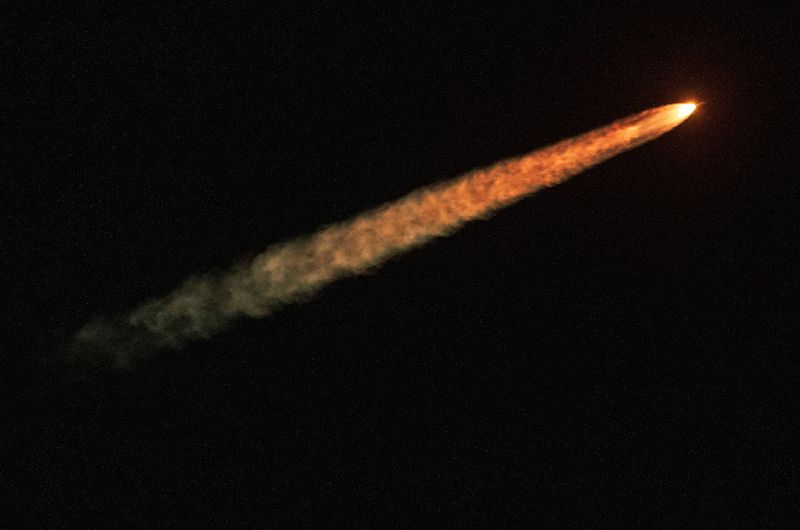By Steve Gorman
(Reuters) -The uncrewed Orion capsule of NASA's Artemis I mission sailed within 80 miles (130 km) of the lunar surface on Monday, achieving the closest approach to the moon for a spacecraft built to carry humans since Apollo 17 flew half a century ago.
The capsule's lunar flyby, on the return leg of its debut voyage, came a week after Orion reached its farthest point in space, nearly 270,000 miles from Earth while midway through its 25-day mission, the U.S. space agency said on its website.
Orion passed about 79 miles above the lunar surface on Monday as the spacecraft fired its thrusters for a "powered flyby burn," designed to change the vehicle's velocity and set it on course for its flight back to Earth.
NASA said the 3-1/2-minute burn would mark the last major spaceflight maneuver for Orion before it was due to parachute into the sea and splash down on Dec. 11.
The last time a spacecraft designed for human travel came as close to the moon as Orion was the final mission of the Apollo program, Apollo 17, which carried Gene Cernan and Harrison Schmitt to the lunar surface 50 years ago this month. They were the last of 12 NASA astronauts who walked on the moon during a total of six Apollo missions from 1969 to 1972.
Although Orion has no astronauts aboard - just a simulated crew of three mannequins - it flew farther than any previous "crew-class" spacecraft on the 13th day of its mission. It reached a point 268,563 miles from Earth, nearly 20,000 miles beyond the record distance set by the crew of Apollo 13 in 1970, which aborted its lunar landing and returned to Earth after a nearly catastrophic mechanical failure.
The much-delayed and highly anticipated launch of Orion last month kicked off Apollo's successor program Artemis, aimed at returning astronauts to the lunar surface this decade and establishing a sustainable base there as a stepping stone to future human exploration of Mars.
If the mission succeeds, a crewed Artemis II flight around the moon and back could come as early as 2024, followed within a few years by the program's first lunar landing of astronauts with Artemis III. Sending astronauts to Mars is expected to take at least another decade and a half to achieve.
"We couldn't be more pleased about how the spacecraft has been performing really beyond all our expectations," Debbie Korth, deputy manager for NASA's Orion program, told reporters in a news briefing on Monday.
Orion was carried to space atop NASA's towering, next-generation Space Launch System (SLS) rocket, which blasted off on Nov. 16 from NASA's Kennedy Space Center on Cape Canaveral, Florida.

The mission marked the first flight of the combined SLS rocket and the Orion capsule, built by Boeing (NYSE:BA) Co and Lockheed Martin Corp (NYSE:LMT), respectively, under contract with NASA.
The chief objective of Orion's inaugural flight is to test the durability of its heat shield as it re-enters Earth's atmosphere at 24,500 miles per hour, much faster than spacecraft returning from the International Space Station.